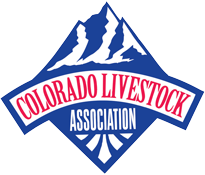Hello again CLA Newsletter readers! Virginia Till here from CALP class 14. Of special interest to my work at EPA Region 8 is how agriculturalists keep food, and other “organics” out of landfills related to the Food Recovery Hierarchy. The term organics, in this case, means any post-consumer food scraps, yard waste, agricultural “seconds”, non-hazardous wood, etc. – basically “green waste”, organic matter. The benefits of keeping organics out of landfills are many, including reducing methane in landfills, emissions transporting material to landfills, and lengthening the life of landfills. CLA readers may find that highlighting this aspect of livestock industries is useful when discussing how, every day, agriculturalists are environmental stewards in their daily work.
Recently I toured my first feedlot, Ordway Cattle Feeders in Ordway, Colorado with Luke Larson, CEO, owner and CALP Class 11 alumnus, and Jason Crouch, operations manager and man of many hats, and CALP 14 classmate. One of the first things Luke showed me was a bag of wheat from a local elevator. He explained that when the price of wheat falls (and is closer to the price of corn), he calls local elevators to see if they have wheat that doesn’t meet specifications for human food use. This particular batch of grain had been rejected for sale to market, but was still perfectly fine for animals. I learned that feedlots are another market for grain elevators to sell excess product.
Luke plans to feed more than 10,000 tons of this wheat to his animals over the course of three months. Another feed ingredient used at Ordway is dried, spent, distiller’s grain – in this case from Nebraska. Last year, they used almost 10,000 tons of this product. It made me wonder where this byproduct of the distilling industry would go if feeding operations didn’t take it. From my knowledge of industrial composting and anaerobic digestion facilities, I know that every town’s ability to process organics varies greatly and communication between potential generators and recipients of organics, and connections across communities are key. In our region, many communities do not have industrial composting or anaerobic digestion facilities. Also, in many EPA Region 8 states, the fees to dump in landfills (tip fees) may be cheaper than the national average, so it can be more economical to landfill materials than develop alternative markets.
This need for connections and collaboration reminded me of one way EPA is helping businesses, farms and local governments keep organics out of landfills – the EPA’s Excess Food Opportunities Map. This new-ish tool can help cities, businesses, non-profits, and governments connect with various sources of excess organics and potential recipients of organics. This interactive mapping tool displays facility-specific information for about 1.2 million potential generators, (such as correctional facilities, schools, hospitals, food manufacturing and processing, food wholesale and retail, etc.) and 4,000 potential recipients of excess food (such as anaerobic digestors, compost facilities, and food banks). The tool can also estimate excess food by generator type, which helped a Pennsylvania dairy that wanted to find additional feedstocks to maximize the operational capacity of its anaerobic digestor. Currently the tool does not show grain elevators as potential generators – should this sector be included as a potential generator category? – To be honest, elevators weren’t a generator category I had considered before my feedlot tour. Now in Version 2.0, this is a tool in progress, so if you have suggestions for improvements (map will be updated regularly), please let me know.
Visiting feedlots like Ordway Cattle Feeders and learning about their use of excess wheat and dried distiller’s grain is a reminder that very little in agriculture seems to ever go to waste. These simple, but common practices reduce waste and incorporate many aspects of environmental stewardship into daily operations. We all need to do more to highlight agricultural practices that are both good for the environment and the producer’s bottom line. I plan to include more of Ordway’s environmental stewardship efforts in my CALP project (newsletter).
Thanks for the time and tour Luke and Jason!
Interested in telling your story about keeping organics out of landfills? Contact till.virginia@epa.gov.




